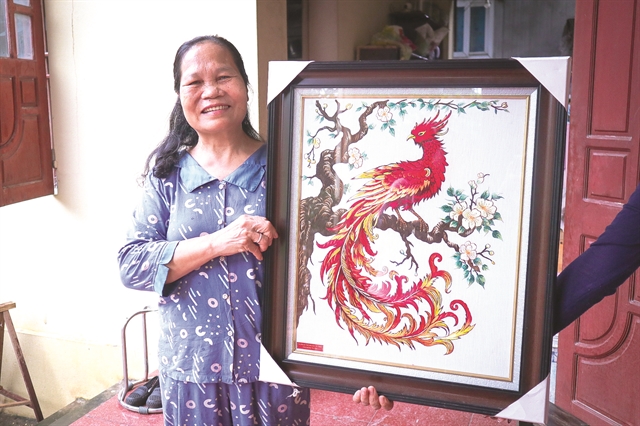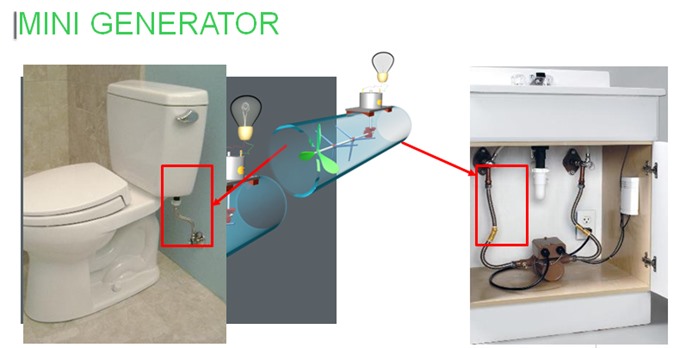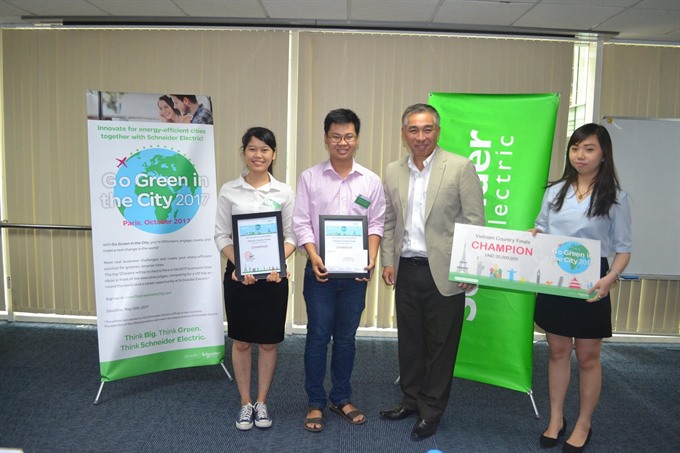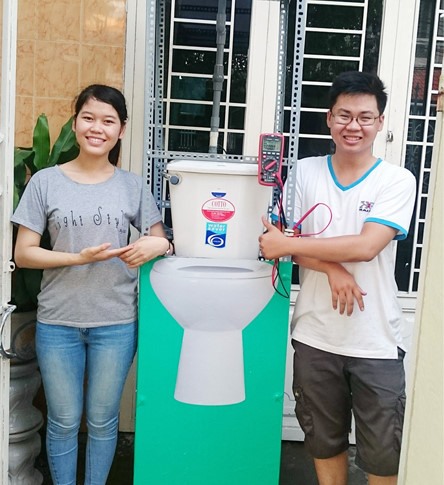 Features
Features

In the near future, public toilets will be able to use their wastewater to generate power for lighting, thanks to a mini generator made by two university students in the central city of Đà Nẵng.
 |
| Propeller power: For the mini generator, the idea is to put a propeller and motor in a water pipe. The water flow will push the propeller to rotate and the motor will generate power. This model can be installed in almost all types of water pipes or faucets in not only public toilets. |
By Hồng Vân
In the near future, public toilets will be able to use their wastewater to generate power for lighting, thanks to a mini generator made by two university students in the central city of Đà Nẵng.
Nguyễn Công Tín, a fresh graduate majoring in Electrical Engineering and Electronics, and Nguyễn Thị Thanh, a third-year student majoring in Business Administration, have successfully made a mini generator and urine battery that runs on wastewater.
The project surpassed another five and won Việt Nam Regional Finals of Go Green In The City in late June, a competition aimed at seeking sustainable energy solutions.
“Đà Nẵng City has several public toilets that dump large amounts of wastewater into the sea. However, these toilets also need power for lighting at night, so we decided to examine the use of this wastewater to create power,” said Thanh.
Tín first came up with the idea of a mini generator in early 2017 and invited Thanh, who has special interest in environmental issues to join his project.
With his strength in technical knowledge, Tín is in charge of designing and modelling the product while Thanh researched the economic benefits as well as environmental impact.
There are more than 5,000 public toilets in urban areas, which need an estimated total of 875,000 kWh per year, equivalent to more than US$60,000, according to research by Thanh.
“This is costly and contributes to pollution,” said Thanh.
“For the mini generator, the idea is to put a propeller and motor in a water pipe. The water flow rotates the propeller and generates power. This model can be installed in almost all types of water pipes or faucets, not just public toilets.
“Meanwhile, an advantage of the urine battery is that it use urine as the main material to generate power. For toilet that are used frequently, the material will be refilled continuously,” said Thanh.
“Power generated from these two devices will be stored and reserved for lighting. This is useful and convenient especially in toilets where lighting is yet unavailable,” Thanh added.
 |
| Success: With the toilet mini generator project, Nguyễn Công Tín (second, left) and Nguyễn Thị Thanh (First, left) won the Việt Nam Regional Finalists of Go Green in the City competition. — Photos courtesy of Nguyễn Thị Thanh |
It took three months for Thanh and Tín to finish the project. By June this year, they released their mini generator and urine battery.
“At the beginning we found it hard to clarify the idea. We tried different models, working very hard while still having to focus on study at university, to decide on a mini generator for toilet,” said Thanh.
“I believe the device will help reduce our dependence on fossil fuel and hydroelectric power as well as encourage the use of eco-friendly batteries,” Thanh told Việt Nam News.
“By using this device, every one of us can be a green energy maker,” Thanh added.
Water flowing at 600-5000 litres per hour in a 27-millimetre-diameter pipe can generate 0.01-1.8W, according to Thanh.
About 60kWh will be generated in each toilet per year, saving more than $14. If a mini generator and urine battery are installed in 5,000 public toilets, about $72,000 will be saved per year.
In June, the two students registered to participate in the "Go Green In The City" competition, a global business case challenge for business and engineering students on green energy solutions for smarter cities launched by Schneider Electric, a company in energy management and automation.
"The Vietnamese finalists are all competitive, the competitors’ ideas are also interesting and worth being learned. Being winner of Việt Nam Regional Finalist is such a big pleasure for us," said Thanh.
“The success of the project at the "Go Green in the City" competition can be attributed to the unique and creative idea, successful demo and potential economic benefits of the product as well as the full knowledge about the product of the two students,” Professor Hà Đắc Bình, dean of Faculty of Electrical Engineering and Electronics of Duy Tân University, who is also instructor of Thanh and Tín for the project, told Việt Nam News.
“The orientation to develop this device will be to reduce the cost of product as well as increase the energy generating capacity. Besides, they can also combine with other sources, like generating energy from sewage to increase the amount of energy,” said Bình. VNS
 |
| Successful duo: With his strength in technical knowledge, Tín (right) is in charge of designing and modelling the product while Thanh researched the economic benefits as well as environmental impact. |




